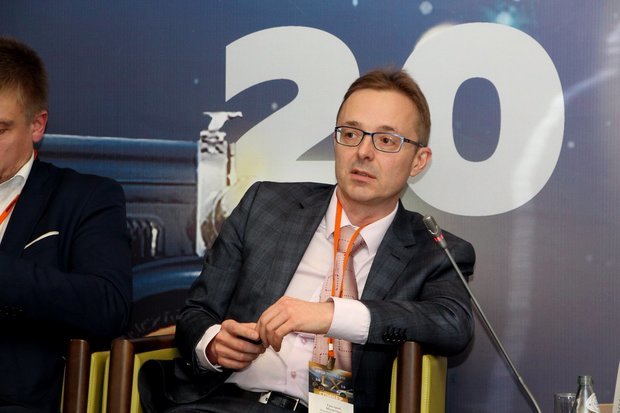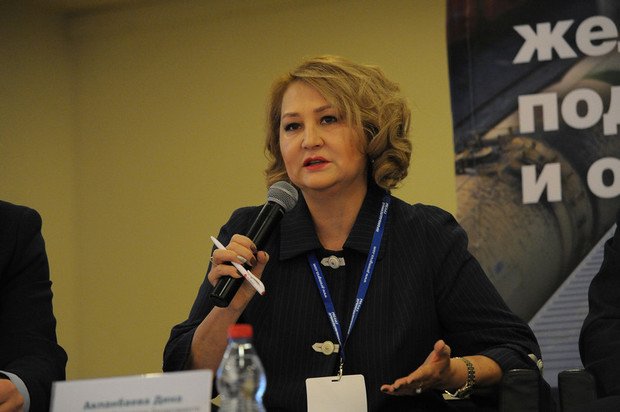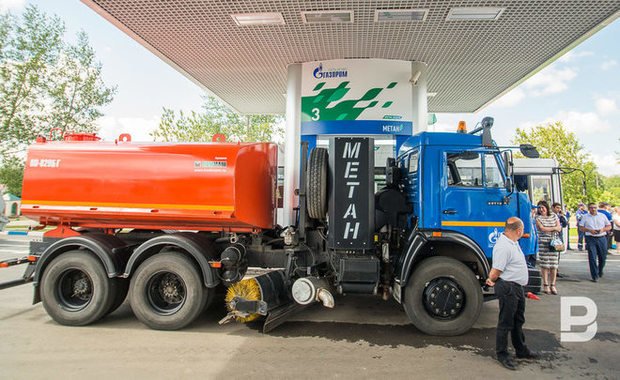Russian automotive market in 2019: way out of the crisis, popular gas and oblivion of electric cars
Experts are happy — the market is gradually creeping out of the pit of 2015, when sales collapsed by a third
Yesterday, Tatarstan International Automotive Forum supported by Automechanika 2019 was launched at Kazanexpo, where manufacturers shared their developments and talked about the prospects. If the previous 2 years were successful for the industry – the sales increased by 13 per cent, this year expectations are modest — about 5 per cent. This is due to the VAT increase and sanctions. Meanwhile, Russia is increasing the number of cars on gas fuel, while Europe and China rely on electric vehicles — by 2035 the world is expected to have 190 million electric cars. Read the details in the material of Realnoe Vremya.
Passenger car sales will grow by 5 per cent in 2019
Automakers have rather modest expectations from the year 2019. The main risks are 20% VAT and possible sanctions from the United States. If in 2017 and 2018 the growth of the industry was 12-13%, in the first months of this year the market has grown by only 0,6%.
''Last year, the passenger car market showed a good growth (+11,9%). Light commercial vehicles and trucks did not show such a growth, but there is an increase in the bus segment (+10,7%). This is due to the renewal of the fleet by the World Cup,'' said Grigory Mikryukov, the head of economic sectors at Analytical Centre under the government of the Russian Federation.
According to the forecasts of the Analytical centre, in 2019 car sales are expected to grow by 5%, and in 2020 — by 3%. According to experts, the market is gradually recovering after the crisis of 2015, when sales of new cars fell by 36%, and the crisis of 2009, when the fall was 50%.

''The question is: what will happen next? The key factor here, if we talk about the passenger segment, is the incomes of the population,'' Mikryukov said.
According to the expert, the low sales in January are explained by the fact that during the past year the state and manufacturers encouraged consumers not to postpone the purchase of a car. This year, according to the expert, state support will cease to play a significant role.
''The amount of support will be reduced, and it will be more targeted. It will be supported by the theme of drones in terms of R&D, the development of environmentally friendly modes of transport, in particular, the theme of electric vehicles,'' said Mikryukov.
For electric cars — separate lane and free parking
According to the forecasts of the International Analytical Agency, the total number of electric vehicles in the world will be 190 million by 2035. Most of them will fall on China and Europe. Russia is still lagging behind — in 2017, the country registered only 410 electric vehicles, while Europe – 408,000. There is no growth in sales of electric vehicles in Russia, on the contrary, there is a drop of 13% compared to 2017.
At the same time, Russian manufacturers are developing in the field of electric transport. Thus, AvtoVAZ is testing Elladas, KAMAZ — NefAZ electric bus, Trolza — electric bus of the same name. But, as noted by Deputy Director of the Department of Industrial Policy of the Eurasian Economic Commission Dina Akpanbaeva, it is necessary to stimulate not only the production but also the consumption of electric vehicles.

''That is why we are proposing to allocate a separate lane for electric vehicles, to exempt them from paying for parking, to reduce duties on the import of components,'' says Akpanbaeva.
According to her, Belarus adopted a programme for the development of charging infrastructure, the government approved the provision of loans for individuals and legal entities who purchase cars and charging stations. In Russia, the situation with charging stations is bad. In Moscow, according to 2018, they are 200, while in France, for example, there were 400,000 in 2015, in the US it is planned to increase their number to 900,000 by 2020.
There is another problem. Despite the fact that the leading car factories in Russia produce prototypes of cars on electric motors, the components in them are mainly imported.
IT in automotive industry: $170bn investment in the next 5 years
On the plus side, Russia can boast a growth of cars on gas fuel. The participants of the exhibition did not provide data for 2018, but for 2017 the growth was 8% for cars, 9% — for freight and 18% — for buses on natural gas.
According to the traffic police and Rosstat, in 2017 in Russia there were 1,027 million cars on LNG, 406,000 trucks and 80,000 buses. Europe and China do not sell cars on gas.
We also talked about IT in the automotive industry at the exhibition. Omnicomm CEO Boris Pankov offered to raise hands to those who use the built-in navigation system – they were less in the audience than those who use a smartphone for this purpose.

''Most do not use standard navigation — it becomes obsolete until the moment when we start using the car. The pace of life of the automotive industry is different from the pace of life in IT 20 times — the car lives 20 years, and IT — 2 years,'' Pankov compared and expressed the opinion that this difference will rapidly decline.
According to experts, automakers will cease to engage in digitalization, entrusting it to IT-companies that will have access to the neural network of the car from the outside. Investments in innovation until 2025 will amount to $170 billion, of which 30% — in the development of Automotive 4.0, 10% — in Connected Cars technology and 7% — in the development of security systems.
In Russia, the Connected Cars market will grow less rapidly: by 2025, the share of cars connected to Era-GLONASS will be 30%, to other telematics systems — 2,5%. Basically, it will be cars of the middle and premium segments. Few will install additional telematics equipment on economy segment cars.